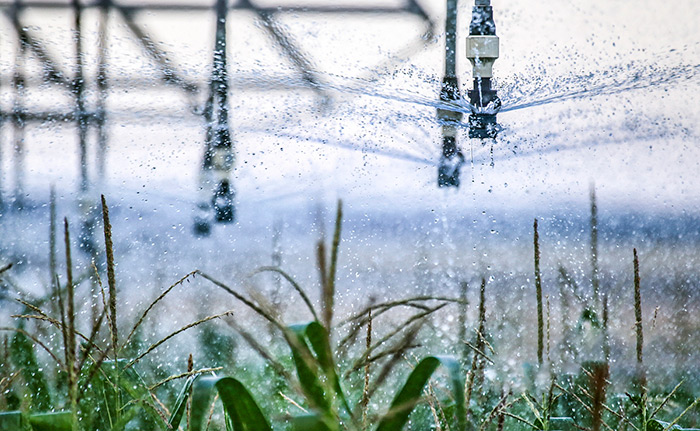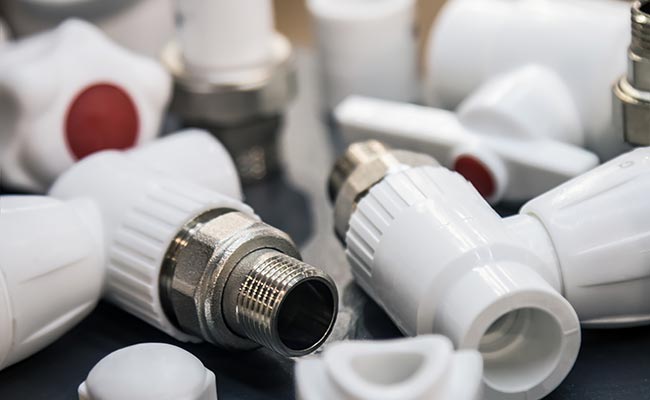Me he mea maʻalahi ke koho ʻana i kahi pōlele a ʻike ʻoe i nā koho āpau. E koho i ka mea hewa, a hiki iā ʻoe ke alo i ke kahe i kaupalena ʻia, ka mana maikaʻi ʻole, a i ʻole ka hemahema o ka ʻōnaehana.
Hoʻokaʻawale ʻia nā ʻano ʻano nui ʻehā o ka pōlele e kā lākou hana a me ka hoʻolālā ʻana: ʻo ka valve floating ball valve, ka valve ball trunnion-mounted ball valve, ka valve full-port, a me ka valve hōʻemi-port valve. Ua kūpono kēlā me kēia no nā kaomi like ʻole a me nā koi kahe.
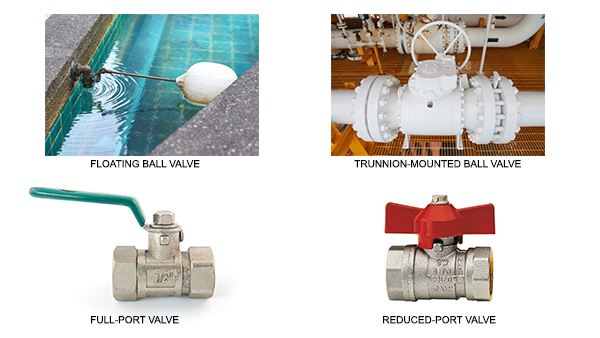
Ke kamaʻilio pinepine nei au me Budi, he luna kūʻai no kekahi o kā mākou mau hoa ma Indonesia, e pili ana i ke aʻo ʻana i kāna hui kūʻai. ʻO kekahi o nā pilikia nui loa no ka poʻe kūʻai hou, ʻo ia ka nui o nā ʻano valve. Hoʻomaopopo lākou i ka hana on/off maʻamau, akā loaʻa lākou me nā huaʻōlelo e like me "trunnion[1]," "L-port," aiʻole "lana ana[2].” Hiki i ka mea kūʻai ke noi i kahi pahu no kahi laina kiʻekiʻe, a hiki i ka mea kūʻai aku ke hāʻawi i kahi pahu lana maʻamau ka mea e pono ai ʻO ka wehe ʻana i kēia mau ʻāpana i nā manaʻo maʻalahi ʻaʻole ia e pili ana i ke kūʻai ʻana i kahi huahana.
He aha nā ʻano ʻehā o nā pahu kinipōpō?
Pono ʻoe i kahi valve, akā hōʻike ka papa inoa i nā ʻano he nui. ʻO ka hoʻohana ʻana i ka mea hewa hiki ke hana i kahi bottleneck i kāu ʻōnaehana a i ʻole ke ʻano o ka uku ʻana no nā hiʻohiʻona āu e pono ʻole ai.
Hoʻokaʻawale pinepine ʻia nā kiwi pōpō e ko lākou hoʻolālā pōleʻa a me ka nui o ka pahu. ʻO nā ʻano maʻamau ʻehā: lana a me ka trunnion-kau ʻia (e ke kākoʻo pōlele) a me ke awa piha a me ke awa hōʻemi (ma ka nui o ka wehe ʻana). Hāʻawi kēlā me kēia i kahi kaulike like ʻole o ka hana a me ke kumukūʻai.
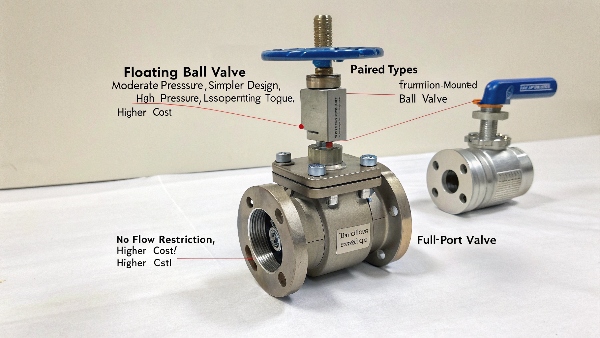
E wāwahi mākou i kēia mau mea. ʻO nā ʻano mua ʻelua e pili ana i ke kākoʻo ʻana o ka pōleʻa i loko o ka valve. Akiwi kinipopo lana[3]ʻo ia ke ʻano maʻamau; paʻa ka pōleʻa e nā noho lalo a me luna. He mea maikaʻi no ka hapa nui o nā noi maʻamau. Apahu pahu i hoʻopaʻa ʻia[4]Loaʻa iā ia nā kākoʻo mīkini ʻē aʻe—he kumu ma luna a me ka ʻauamo ma lalo—e paʻa ana i ka pōleʻa. ʻO kēia ka mea kūpono no nā kiʻekiʻe kiʻekiʻe a i ʻole nā kiwi nui loa. ʻO nā ʻano ʻelua aʻe e pili ana i ka nui o ka lua ma o ka pōleʻa. Apiha-puka(a i ʻole ka pahu piha) he puka e like me ka nui o ka paipu, ʻaʻohe palena o ke kahe. Ahoemi-pukaʻoi aku ka liʻiliʻi o ka puka valve. He maikaʻi loa kēia no nā kūlana he nui a hoʻolilo i ka valve i mea liʻiliʻi a ʻoi aku ka maʻalahi.
Hoʻohālikelike i nā ʻano nui ʻehā
| ʻAno pāpaʻi | wehewehe | Pono No |
|---|---|---|
| Poepoe lana | Paʻa ʻia ka pōleʻa ma ke kaomi ʻana ma waena o nā noho ʻelua. | Nā noi maʻamau, haʻahaʻa haʻahaʻa. |
| Kau ʻia ʻo Trunnion | Kākoʻo ʻia ka pōleʻa e ke kumu o luna a me ke kumu lalo. | Paʻa kiʻekiʻe, nui-diameter, lawelawe koʻikoʻi. |
| Piha-Awa | Ua like ka lua o ka poepoe i ke anawaena o ka paipu. | He mea koʻikoʻi nā noi e kahe ʻole ʻia. |
| Hoemi-Awa | ʻOi aku ka liʻiliʻi o ka puka o ka poepoe ma mua o ke anawaena o ka paipu. | Nā noi kumu nui kahi e ʻae ʻia ai nā poho kahe liʻiliʻi. |
Pehea ʻoe e ʻike ai inā ua hāmama a ua pani ʻia paha ka pahu kinipōpō?
Ua kokoke ʻoe e ʻoki i loko o kahi paipu, akā maopopo ʻoe ua pani ʻia ka valve? ʻO kahi kuhi hewa maʻalahi maʻaneʻi hiki ke alakaʻi i kahi pōʻino nui, poino wai, a i ʻole ʻeha.
Hiki iā ʻoe ke haʻi inā apōlele pōlelewehe a pani ʻia paha ma ka nānā ʻana i ke kūlana o ka lima e pili ana i ka paipu. Inā like ka lima me ka paipu, ua hāmama ka valve. Inā kū pololei ka lima (e hana ana i kahi ʻano "T"), ua pani ʻia ka pahu.
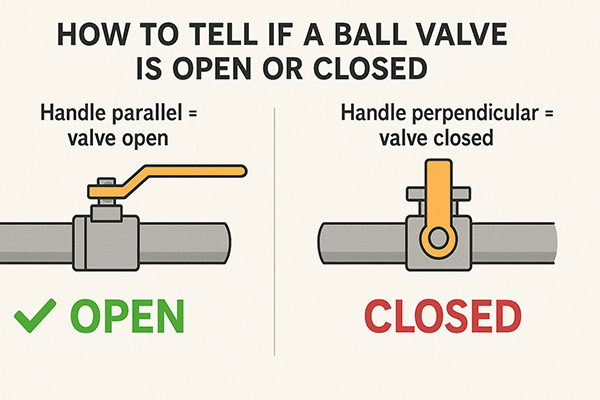
ʻO kēia ka ʻāpana kumu a koʻikoʻi o ka ʻike no ka poʻe e hana ana me nā kiwi pōpō. ʻO ke kūlana o ka lima he hōʻailona ʻike pololei o ke kūlana o ka pōleʻa. ʻO kēia hiʻohiʻona hoʻolālā maʻalahi kekahi o nā kumu nui i kaulana nui ai nā kiwi pōpō. ʻAʻohe kuhi. Ua lohe au i kekahi moʻolelo mai Budi e pili ana i kekahi limahana mālama ʻōpio ma kahi hale e wikiwiki ana. Nānā aʻela ʻo ia i kahi valve a manaʻo ʻo ia ua pio, akā he ʻīpuka kahiko ia e koi ana i nā huli he nui, a ʻaʻole hiki iā ia ke haʻi aku i kona kūlana. Hana ʻo ia i ka ʻoki a hoʻopiha i ka lumi. Me ka pahu kinipopo, aneane hiki ole ke hana i kela kuhihewa. Hāʻawi ka hana ʻehā-huli a me ke kūlana paʻa maʻemaʻe i ka manaʻo wikiwiki a maopopo ʻole: ma ka laina "on," ma ka ʻaoʻao ʻo "off". ʻO kēia hiʻohiʻona maʻalahi he mea hana palekana ikaika.
He aha ka ʻokoʻa ma waena o ka ʻano T a me ka L type ball valve?
Pono ʻoe e hoʻohuli i ke kahe, ʻaʻole e hoʻōki wale. ʻAʻole holo pono ke kauoha ʻana i ka valve maʻamau, a ʻo ke kauoha ʻana i ka valve multi-port hewa hiki ke hoʻouna i ka wai i kahi hewa loa.
ʻO ke ʻano T a me ke ʻano L e pili ana i ke ʻano o ka lua i loko o ka pōleʻa o ka valve 3-way. Hiki i ke ʻano L ke hoʻohuli i ke kahe mai kahi puka komo i kekahi o nā puka puka ʻelua. Hiki i kahi ʻano T ke hana like, a hiki iā ia ke hoʻohui pū i nā awa ʻekolu.
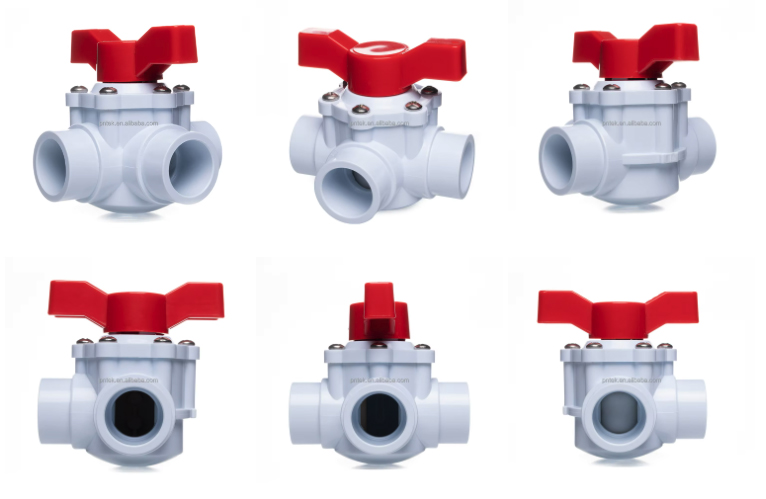
He mea maʻamau kēia o ka huikau no ka poʻe e kūʻai ana i kā lākou valve 3-ala mua. E noʻonoʻo kākou e pili ana i ka valve me nā awa ʻekolu: lalo, hema, a ʻākau. ʻO AnL-Awa[5]He 90-degere ka pi'o o ka valve i wiliia ma ka poepoe. Ma kahi hoʻokahi, hoʻohui ia i ke awa lalo i ke awa hema. Me ka hāhā huli, hoʻohui ia i ke awa lalo i ke awa ʻākau. ʻAʻole hiki ke hoʻohui i nā mea ʻekolu. He kūpono no ka hoʻohuli ʻana i ke kahe mai kahi kumu hoʻokahi i ʻelua mau wahi ʻokoʻa. AT-Port[6]He ʻano "T" ka valve i wili ʻia ma ka pōleʻa. Loaʻa iā ia nā koho ʻē aʻe. Hiki iā ia ke hoʻohui i ka lalo i ka hema, ka lalo i ka ʻākau, a i ʻole hiki ke hoʻohui i ka hema i ka ʻākau (bypassing the bottom). ʻO ka mea koʻikoʻi, loaʻa iā ia kahi kūlana e hoʻopili ai i nā awa ʻekolu i ka manawa hoʻokahi, e ʻae ai i ka hui ʻana a i ʻole ka hoʻohuli ʻana. Nīnau mau ka hui o Budi i ka mea kūʻai: “Pono ʻoe e hoʻohui i nā kahe, a i ʻole e hoʻololi i waena o lākou?” Hōʻike koke ka pane iā lākou inā pono kahi T-Port a i ʻole L-Port.
L-Port vs. T-Port hiki
| Hiʻona | L-Port Valve | T-Port Valve |
|---|---|---|
| Hana mua | Ke hoʻohuli ʻana | Hoʻololi a hui ʻana paha |
| Hoʻohui i nā awa ʻekolu a pau? | No | ʻAe |
| Kūlana Paʻa? | ʻAe | ʻAʻole (ʻO ka maʻamau, wehe mau kekahi awa) |
| Hoʻohana maʻamau | Ke hoʻololi nei i ke kahe ma waena o ʻelua pahu. | Ka hui ʻana i ka wai wela a me ka wai anuanu, kaʻalo laina. |
He aha ka ʻokoʻa ma waena o ka puʻupuʻu a me ka pahu kinipopo lana?
Ke hana nei kāu ʻōnaehana ma lalo o ke kaomi kiʻekiʻe. Inā koho ʻoe i ka valve pōpō maʻamau, hiki i ke kaomi ke paʻakikī i ka huli ʻana a i ʻole e hoʻopau i nā sila i ka manawa.
I loko o kahi valve lana, "holo" ka pōleʻa ma waena o nā noho, paʻi ʻia e ke kaomi. I loko o kahi pahu pahu, ua hoʻopaʻa ʻia ka pōleʻa e kahi kumu o luna a lalo (ka pahu), kahi e hoʻomoʻa ai i ke kaomi a hoʻemi i ke kaumaha ma nā noho.
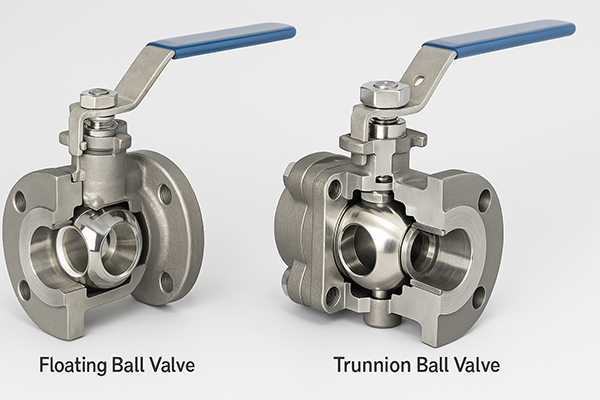
ʻO ka ʻokoʻa e pili ana i ka mālama ʻana i ka ikaika. Ma kahi maʻamaukiwi kinipopo lana[7], i ka wā i pani ʻia ai ka valve, hoʻokuʻu ikaika ke kaomi i luna i ka pōleʻa i ka noho lalo. Hana kēia ikaika i ke sila. ʻOiai ʻoi aku ka maikaʻi, hana kēia i ka nui o ka friction, hiki ke hoʻohuli i ka valve, ʻoi aku ka nui ma lalo o ke kaomi kiʻekiʻe. Apahu pahu i hoʻopaʻa ʻia[8]hoʻoponopono i kēia pilikia. Hoʻopaʻa paʻa ʻia ka pōleʻa e nā kākoʻo trunnion, no laila ʻaʻole ia e paʻi ʻia e ke kahe. Hoʻokuʻu ke kaomi i nā noho i hoʻopiha ʻia i ka puna i ka pōleʻa kū. Hoʻopili kēia hoʻolālā i ka ikaika nui, e hopena i ka torque haʻahaʻa loa (ʻoi aku ka maʻalahi o ka huli ʻana) a me ke ola noho lōʻihi. ʻO kēia ke kumu no nā noi ʻoihana kiʻekiʻe, ʻoi aku hoʻi i ka ʻoihana ʻaila a me ke kinoea, ʻo nā valves trunnion ka mea i koi ʻia. No ka hapa nui o nā ʻōnaehana PVC, ʻoi aku ka haʻahaʻa o ke kaomi ʻana e hana maikaʻi ai kahi pahu lana.
Lanakila vs. Trunnion Head-to-Head
| Hiʻona | Poepoe lana ana | Pahu kinipopo Trunnion |
|---|---|---|
| Hoʻolālā | Paʻa ʻia ke kinipōpō e nā noho. | Paʻa ʻia ka pōleʻa e ke kumu a me ke kumu. |
| Paʻi Paʻi | Haʻahaʻa i ka waena. | ʻO waena a kiʻekiʻe loa. |
| Torque hana | ʻOi aku ke kiʻekiʻe (piʻi me ke kaomi). | Haʻahaʻa a ʻoi aku ka kūlike. |
| Koina | lalo | Kiʻekiʻe |
| Hoʻohana maʻamau | ʻO ka wai, ka paipu maʻamau, nā ʻōnaehana PVC. | ʻO ka aila a me ke kinoea, nā laina hana kiʻekiʻe. |
Ka hopena
ʻO nā ʻano valve nui ʻehā — lana, trunnion, full-port, a me ka hōʻemi-port — hāʻawi i nā koho no kēlā me kēia noi. ʻO ka ʻike ʻana i ka ʻokoʻa ma waena o lākou, a me nā ʻano kūikawā e like me L-port a me T-port, e hōʻoia ʻoe e koho maikaʻi loa.
Kuhikuhi:[1]:He mea koʻikoʻi ka hoʻomaopopo ʻana i nā valve trunnion no ka hāʻawi ʻana i nā hopena kūpono i nā noi kiʻekiʻe.
Ka manawa hoʻouna: Jul-11-2025


